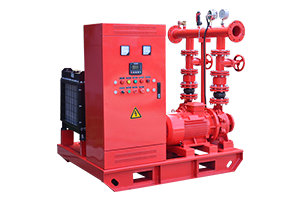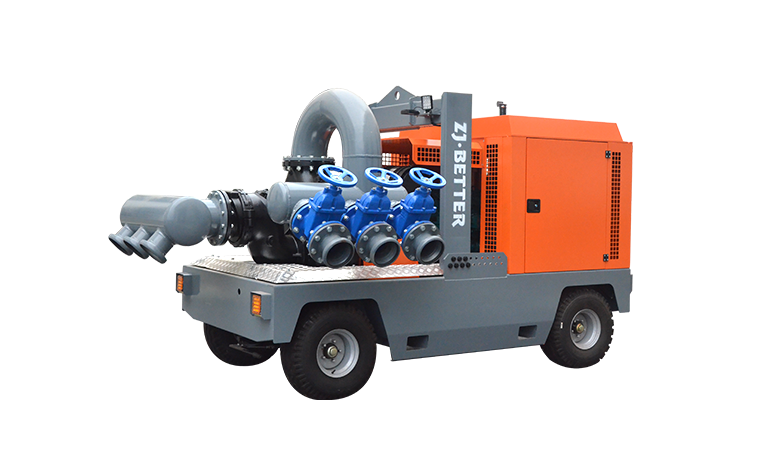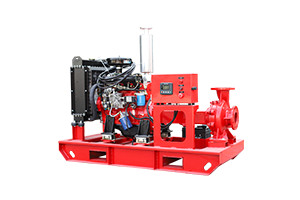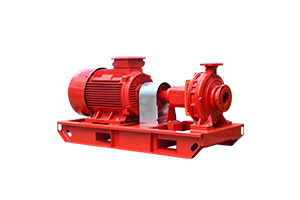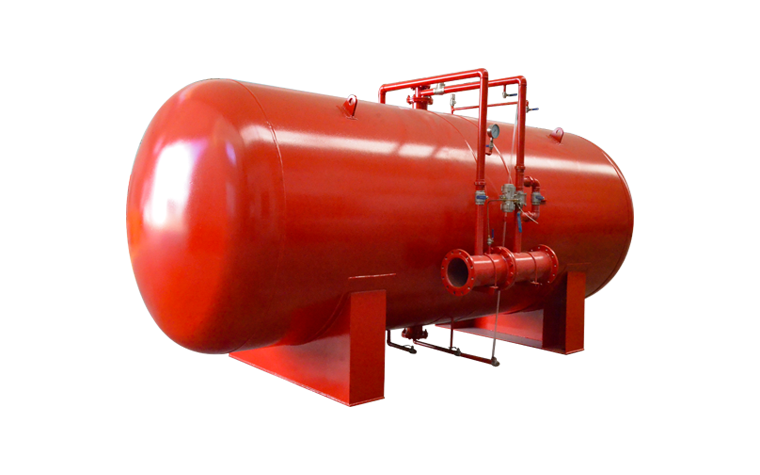-
 Feb 22, 2023What preparations need to be made before the diesel engine fire pump starts?1. Check the diesel engine fire pump for proper operation and make sure all necessary maintenance has been performed.
Feb 22, 2023What preparations need to be made before the diesel engine fire pump starts?1. Check the diesel engine fire pump for proper operation and make sure all necessary maintenance has been performed.
2. Check the fuel supply and fill the tank if necessary.
3. Check the oil level and top it up if necessary.
4. Check the radiator and fill it up with water or antifreeze as necessary.
5. Inspect all the electrical connections to make sure they are secure and free of corrosion.
6. Check the oil and fuel filters and replace them if necessary.
7. Check the battery and charge it if necessary.
8. Prime the fuel system if necessary.
9. Check and adjust the governor, fuel injection pump, and air intake systems.
10. Check the air filter and replace it if necessary.
11. Check and adjust the pump, valves, and other components.
12. Check the pump controller and make sure it is functioning properly.View details -
 Feb 21, 2023How should fire pumps be selected, and what are the differences from ordinary domestic pumps?Fire pumps should be selected based on the specific requirements of the application. The primary differences between fire pumps and ordinary domestic pumps are the materials used, the operating pressures, and the flow capacities. Fire pumps are designed to withstand higher operational pressures and flows than domestic pumps and must be able to handle the increased pressure and flow created by the fire system. Additionally, fire pumps are typically built with corrosion-resistant materials to ensure they can withstand the high-temperature and chemically-active environment caused by fire.
Feb 21, 2023How should fire pumps be selected, and what are the differences from ordinary domestic pumps?Fire pumps should be selected based on the specific requirements of the application. The primary differences between fire pumps and ordinary domestic pumps are the materials used, the operating pressures, and the flow capacities. Fire pumps are designed to withstand higher operational pressures and flows than domestic pumps and must be able to handle the increased pressure and flow created by the fire system. Additionally, fire pumps are typically built with corrosion-resistant materials to ensure they can withstand the high-temperature and chemically-active environment caused by fire.
When selecting a fire pump, the most important consideration is to ensure that the pump is suitable for the fire protection system in which it will be used. Fire pumps must be able to provide the necessary pressure, flow rate, and head for the system in which it will be used. Fire pumps typically have higher pressure and flow requirements than domestic pumps. Fire pumps must also be capable of operating at higher temperatures than domestic pumps and must be able to handle the corrosive chemicals and gases present in fire suppression systems. Additionally, fire pumps must be designed to meet stringent NFPA guidelines and include features such as thermal overload protection, pressure switches, and/or bypass valves.
Fire pumps should be selected based on the building’s fire protection system requirements, including the size and type of the system, the type of fuel source, the required flow rate, and the pressure requirements. Fire pumps must be specifically designed for fire protection systems and are built to higher standards than domestic pumps. Fire pumps are designed to provide a steady flow of water under high pressure, whereas domestic pumps are designed to provide a variable flow of water at lower pressures. Fire pumps must also be able to withstand extreme temperatures and pressure changes, and must be certified by a regulatory agency.
Fire pumps should be selected based on the type of application and the specific requirements of the fire protection system. Fire pumps are designed to provide a high level of pressure and flow rate, which is necessary for fire sprinkler systems, fire standpipe systems, and fire hydrant systems. Fire pumps are made with components that are resistant to corrosion, and fire pumps are typically powered by electric motors or diesel engines. Fire pumps also have higher discharge pressures than domestic pumps, which are used to supply water to a home or business.View details -
 Feb 21, 2023What aspects should be paid attention to in the selection of fire pump1. Check the safety performance of the fire pump, such as whether there is an automatic start-up device, whether the power supply can be automatically switched when the power supply is abnormal, etc.
Feb 21, 2023What aspects should be paid attention to in the selection of fire pump1. Check the safety performance of the fire pump, such as whether there is an automatic start-up device, whether the power supply can be automatically switched when the power supply is abnormal, etc.
2. Check the flow rate and pressure of the fire pump to ensure that the required flow rate and pressure can be met.
3. Check the quality and performance of the fire pump, such as the life of the pump, the noise generated by the pump during operation, etc.
4. Check the protection level of the fire pump, such as the protection level of the control system, the protection level of the power supply, etc.
5. Check the installation requirements of the fire pump, such as the installation site, the height of the fire pump, etc.View details -
 Feb 17, 2023How should I pick a fire pump and what are the differences from ordinary domestic pumps?Fire pumps, as the name implies, are pumps used for fire fighting. Fire pumps are imported foreign products and are divided into different types according to different classifications to be fully sealed, leak-free and corrosion-resistant.
Feb 17, 2023How should I pick a fire pump and what are the differences from ordinary domestic pumps?Fire pumps, as the name implies, are pumps used for fire fighting. Fire pumps are imported foreign products and are divided into different types according to different classifications to be fully sealed, leak-free and corrosion-resistant.
Widely used in environmental protection, water treatment, fire fighting and other departments, is used to pump all kinds of liquid, is the ideal pump to create a leak-free, pollution-free civilized workshop, civilized factory and fire fighting system. Pump types are similar, only the head and flow rate are different.
The selection of fire pumps should be based on the process flow, drainage requirements, and other five aspects to be considered.
Fire pumps are different from ordinary life pumps, the difference is that.
(1) Fire pumps are used to ensure the water quantity and pressure of fire fighting water, involving personal safety and property protection, and must operate more reliably. The pump body is required to be more reasonable in structure, more appropriate in material and more reliable.
(2) Fire fighting flow is relatively regular. Fire hydrant water supply system to 5L / s as a step increment. Automatic sprinkler system to corresponding to the light danger level, medium danger level, serious danger level flow value incremental.
(3) Fire pump water supply is generally used by the pump directly to the fire extinguishing facilities (fire hydrant, sprinkler head) water supply. In the initial fire fighting or self-test operation for the small flow of water supply, in the fire development stage according to the design flow of water supply. When the pump flow ~ head curve is steep, it is easy to produce overpressure phenomenon when running at low flow, for which corresponding technical measures should be taken.
(4) The fire pump is used to extinguish the fire, requiring rapid, timely, corresponding requirements for the fire pump priming time is shorter than ordinary life pump, start performance to better.
View details -
 Feb 17, 2023What are the classifications of fire pumps?There are many ways to classify fire pumps. According to whether there is a power source, they can be divided into: fire pumps without power sources (referred to as pumps); fire pump sets (referred to as pump sets), and fire pumps without power can be classified according to the following rules:
Feb 17, 2023What are the classifications of fire pumps?There are many ways to classify fire pumps. According to whether there is a power source, they can be divided into: fire pumps without power sources (referred to as pumps); fire pump sets (referred to as pump sets), and fire pumps without power can be classified according to the following rules:
1. According to the occasion of use, it can be divided into: fire pumps for vehicles, fire pumps for ships, fire pumps for engineering, and fire pumps for others.
2. According to the outlet pressure level, it can be divided into low-pressure fire pumps, medium-pressure fire pumps, medium-low pressure fire pumps, high-pressure fire pumps, and high-low fire pumps.
3. According to the auxiliary features, it can be divided into ordinary fire pumps, deep well fire pumps and submersible fire pumps.
4. According to the purpose, it can be divided into water supply fire pump, voltage stabilized fire pump, and foam liquid fire pump.
The following is a brief introduction to several types of fire pumps.
Sprinkler pump: It is a fixed device in the fire sprinkler system. It is widely used at present and has the characteristics of low price, long life and high fire extinguishing efficiency. The fire sprinkler system can also work synchronously with other fire-fighting facilities, which can effectively control and extinguish the initial fire.
Stabilizing pump: The flow rate of the stabilizing pump is small. Usually, water is taken from the fire pool or high-level fire water tank and sent to the system to maintain the pressure in the system pipeline. When a fire occurs, it provides the flow for starting the system until the main fire pump starts. , the stabilizing pump needs to be equipped with a backup pump.
Fire hydrant pump: Fire hydrant pumps are divided into vertical single-stage, vertical multi-stage, horizontal multi-stage, horizontal single-stage and other structural forms, mainly used for pressurized water delivery in fire hydrant systems. The flow range of the transported liquid is generally 5-80L/s, the pressure range is 0.2-2.25MPa, the supporting power range is 1.5-200kW, and the diameter range is Ф50-Ф250mm.View details -
 Feb 14, 2023The electric fire pump set produces abnormal noise, how to judge the fault of the equipment?Noise is one of the most common problems when mechanical equipment is running. In order to better use and maintain equipment, we need to have a certain ability to distinguish whether it is normal operating noise or noise caused by equipment failure. And the noise generated by different parts also means that there may be different fault problems in the equipment. Shanghai Xizhiquan is a professional fire pump manufacturer, and the company's professional engineers will share with you various reasons for the noise of the motor and coupling.
Feb 14, 2023The electric fire pump set produces abnormal noise, how to judge the fault of the equipment?Noise is one of the most common problems when mechanical equipment is running. In order to better use and maintain equipment, we need to have a certain ability to distinguish whether it is normal operating noise or noise caused by equipment failure. And the noise generated by different parts also means that there may be different fault problems in the equipment. Shanghai Xizhiquan is a professional fire pump manufacturer, and the company's professional engineers will share with you various reasons for the noise of the motor and coupling.
1. Motor noise
When the motor is noisy, we need to distinguish whether it is the airflow noise of the motor cooling fan or other possible abnormal noises of the motor. The main causes of abnormal noise are as follows:
a) The frictional noise generated between the cooling fan and the fan cover can be checked by removing the fan cover to see if the noise disappears. You can make a judgment and adjust the fan blades and fan cover to solve this problem.
b) There are two main reasons for the failure of the motor rotor bearing. One is that the bearing is rusted due to water ingress, and the other is that the motor heats up abnormally. It is necessary to replace the motor bearing to solve the abnormal sound.
2. Coupling running noise
For a water pump with an elastic coupling, if the coupling part produces periodic abnormal noises and rubber powder falls off during operation, it can be basically judged that the noise is caused by poor alignment between the pump shaft and the motor shaft, and it needs to be shut down Re-align the shaft.View details

